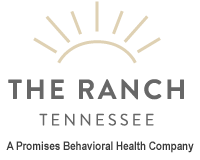Relatively large numbers of people in the U.S. abuse an opioid medication normally prescribed to treat pain or certain other medical issues. In turn, a substantial number of prescription opioid users and abusers will develop opioid dependence or full-blown opioid addiction. In a study published in June 2014 in the journal Addictive Behaviors, researchers from two U.S. universities objectively and subjectively measured the sleep quality of people affected by opioid dependence. These researchers found that, in both objective and subjective terms, opioid dependence is linked to a range of sleeping problems.
Prescription Opioid Abuse
Prescription opioid abusers do such things as take their own medications in ways unintended by their doctors, take a medication prescribed for another person or take a medication not prescribed by any doctor. Figures from the federal Substance Abuse and Mental Health Services Administration identify abuse of opioid medications as the most common form of prescription drug abuse in the U.S. Most abusers do not pay for prescription opioid medications or steal them from someone. Instead, they obtain the medications at no cost from a willing second party who has a legitimate prescription from at least one doctor. About 17 percent of all new drug users in the U.S. start by abusing an opioid painkiller. Out of all illicit/illegal drugs and medications, only marijuana serves more often as an introduction to drug use.
Opioid Dependence and Addiction
Addiction specialists and researchers use the term dependence to signify the establishment of a physical reliance on the intake of alcohol or a drug or medication. In many cases, the presence of physical dependence is more or less synonymous with the presence of substance addiction. For this reason, experts in the field sometimes use the two terms (dependence and addiction) interchangeably. However, dependence and addiction sometimes exist as clearly separate issues. For example, a long-time opioid medication user who never abuses their prescription can develop a case of physical dependence that produces no real harm or life impairment. Conversely, opioid dependence can clearly serve as an entry point to highly dysfunctional, life-impairing opioid addiction. As a rule, a person who participates in opioid abuse has much higher risks for the onset of addiction than a person who takes an opioid medication in accordance with their prescription.
Link to Sleeping Problems
Sleeping problems come in a range of forms, including such things as unusual difficulty falling asleep, an insufficient amount of time spent asleep, a failure to feel restored after a normally adequate amount of sleep and abnormal daytime sleepiness. Doctors and researchers can measure a person’s self-perceived level of sleep quality with the help of tests that include the Insomnia Severity Index and the Pittsburgh Sleep Quality Index. They can also objectively monitor sleeping patterns with a specialized unit called an actigraph. In the study published in Addictive Behaviors, researchers from the Medical University of South Carolina and the University of California at Los Angeles used an examination of 68 people to explore the issue of subjective and objective sleeping problems in people affected by opioid dependence (but not necessarily affected by opioid addiction). Thirty-three of the study participants had symptoms of opioid dependence but were not seeking treatment from a substance program. The remaining 35 participants did not have any opioid dependence-related issues. Each individual in both groups took both the Insomnia Severity Index and the Pittsburgh Sleep Quality Index and also had their sleeping patterns objectively checked with an actigraph. In addition, the researchers used a test called the Brief Pain Inventory to assess the subjective level of pain problems in each participant group. After reviewing the subjective and objective testing results, the researchers concluded that almost 81 percent of the study participants in the group affected by opioid dependence had subjective scores that indicated a self-identified problem with sub-par sleep quality. Conversely, only 8.8 percent of the participants unaffected by opioid dependence self-identified the presence of significant sleeping problems. The researchers also concluded that the opioid dependence-affected group and the non-affected group had substantially different scores on almost all of the sleep-related variables measured objectively by an actigraph. When they looked at the potential role of pain symptoms in the connection between opioid dependence and sleeping problems, the study’s authors found that those individuals with the most prominent pain symptoms were clearly more likely to develop sleep-related issues. The authors consider their conclusions to be preliminary, but also note their potential importance in identifying and addressing sleeping problems and pain problems in people affected by opioid dependence.

